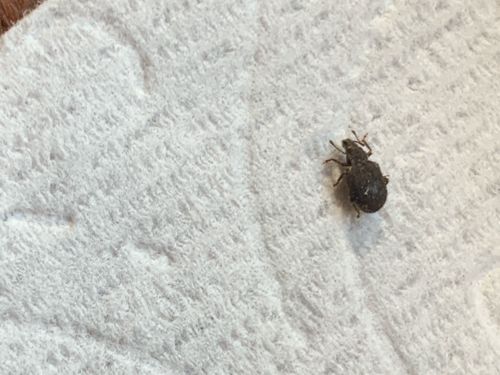Black Vine Weevil
Scientific Name: Otiorhynchus sulcatus
Order & Family: Order: Coleoptera, Family: Curculionidae
Size: Adults typically range from 7 to 10 mm (0.28 to 0.39 inches) in length.

Natural Habitat
Gardens, nurseries, greenhouses, and other areas where ornamental plants are cultivated. They are found in soil where they lay eggs and where larvae and pupae develop.
Diet & Feeding
Larvae feed on plant roots, particularly on the roots of woody and herbaceous ornamental plants. Adults feed on the leaves and stems of a wide range of host plants, including rhododendrons, azaleas, camellias, yews, and many others.
Behavior Patterns
The larva of the black vine weevil feed on the roots of host plants, causing significant damage that may lead to plant death. Adults feed on leaves, creating characteristic notch-like feeding marks along the leaf edges. They are active at night and hide during the day. Females lay eggs in the soil, and larvae develop through several instars before pupating in the soil. There is typically one generation per year.
Risks & Benefits
Risks: The black vine weevil is a significant pest in horticulture and agriculture, causing extensive damage to a wide variety of ornamental plants, fruits, and vegetables. Larval root feeding can severely stunt plant growth and even lead to plant death. Adult feeding causes cosmetic damage to leaves but can also weaken plants. Benefits: There are no significant benefits associated with this pest. They are primarily considered a nuisance and damaging insect.
Identified on: 8/30/2025